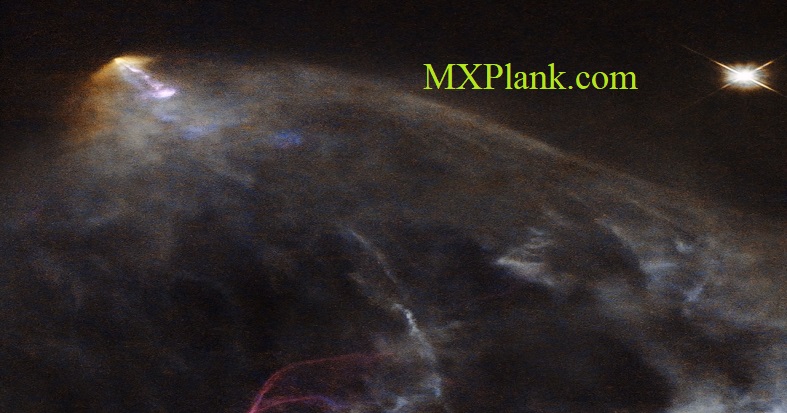A glowing jet from a young star

This image shows an object known as HH 151, a bright jet of glowing material trailed by an intricate, orange-hued plume of gas and dust. It is located some 460 light-years away in the constellation of Taurus (The Bull), near to the young, tumultuous star HL Tau.
In the first few hundred thousand years of life, new stars like HL Tau pull in material that falls towards them from the surrounding space. This material forms a hot disc that swirls around the coalescing body, launching narrow streams of material from its poles. These jets are shot out at speeds of several hundred kilometres per second and collide violently with nearby clumps of dust and gas, creating wispy, billowing structures known as Herbig-Haro objects — like HH 151 seen in the image above.
Such objects are very common in star-forming regions. They are short-lived, and their motion and evolution can actually be seen over very short timescales, on the order of years. They quickly race away from the newly-forming star that emitted them, colliding with new clumps of material and glowing brightly before fading away.
A star forms from a collapsing cloud of cold hydrogen gas. As the star grows, it gravitationally attracts more matter, creating a large spinning disk of gas and dust around it. The disk material gradually spirals onto the star and escapes as narrow, high-speed jets along the star's axis of spin.
These narrow jets of gas and matter, ejected by newly born stars at speeds of several hundred kilometers (or miles) per second are called Herbig-Haro objects (HH) - named after astronomers George Herbig and Guillermo Haro who studied the outflows in the 1950s. They collide with nearby gas and dust in the interstellar medium, producing shock fronts that glow brightly as the gas is heated by the friction.
The jet phase stops when the disk runs out of material. After at most a few tens to a few hundreds of thousands of years after the star's birth, the jets disperse in the interstellar medium under the action of fierce winds produced by the newly formed star. The jets can evolve visibly over quite short timescales, on the order of years, as they move rapidly away from their parent star into the gas clouds in interstellar space.
Herbig-Haro objects are very common in star-forming regions, like HH 151 which is embedded within the larger star-forming region LDN 1551, a stellar nursery full of gas and dust, dark nebulae, newborn stars... and Herbig-Haro objects.
This image is taken with the Wide Field Planetary Camera 2 onboard the Hubble Space Telescope, using optical and infrared filters
NASA/ESA and The Hubble Heritage Team (STScI/AURA)






